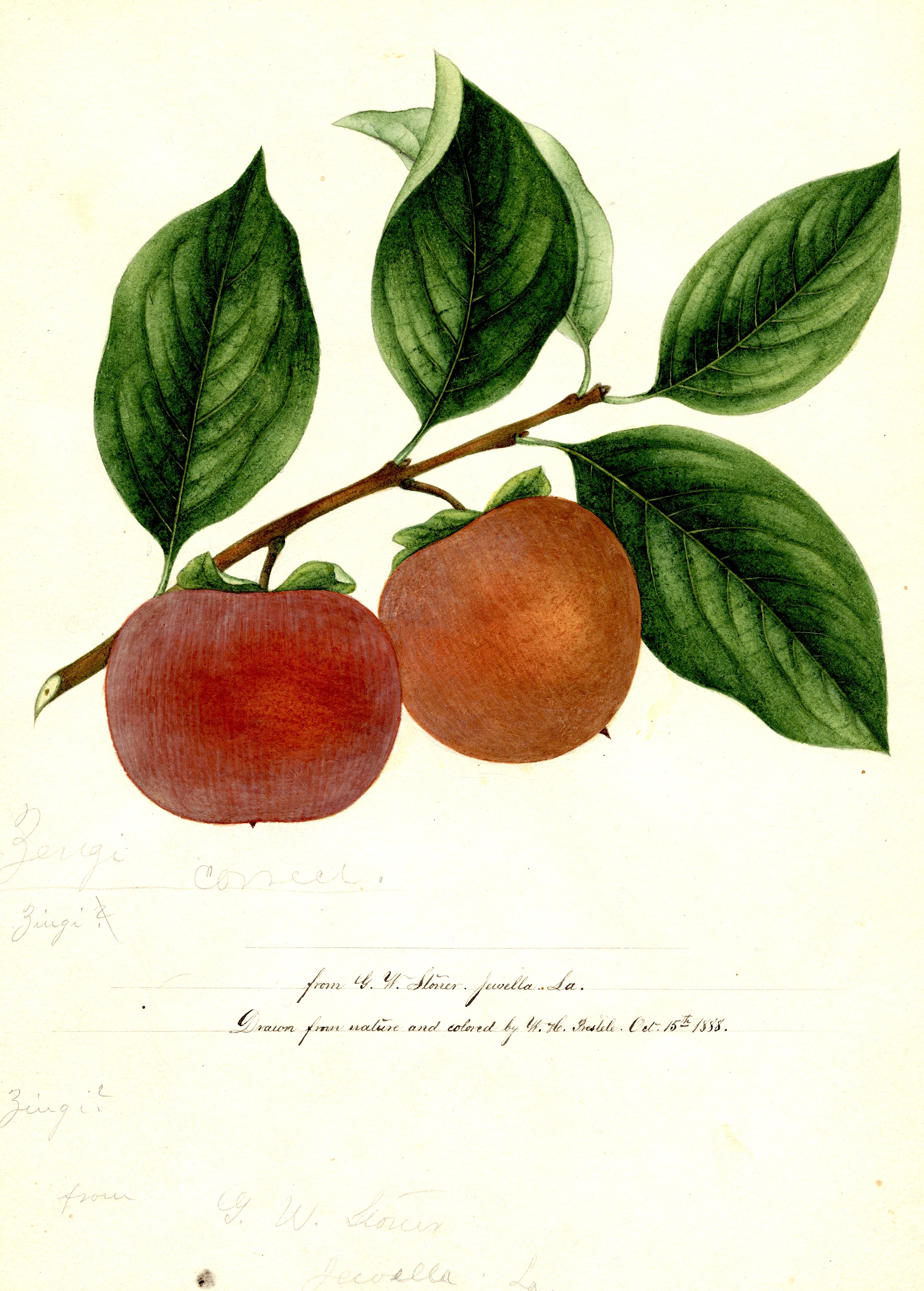 ZENGI
ZENGI
The smallest of the Japanese imported varieties, the dark-fleshed Zengi persimmon resembled the native American persimmon in size. Its skin was yellowish red. Its flesh when ripe was less messy and watery than the American, dark, and more appealing to consumers because it lacked astringency when immature. There was no pucker to the Zengi, and proved delicious when crisp or when soft and sugary. In the South the Zengi became a favorite yard tree for home orchards because of its heat tolerance, it profusion of fruit, and its reliability in supplying annual harvests. The Japanese characterized the Zengi as a member of the class of “Maru”—modest sized round persimmons. Yet unlike American persimmons the Zengi could be prompted to produce substantially larger sized fruit by extensive culling early in the fruiting stage. In the South there was a propensity to spell the name of this persimmon 'Zingi' or 'Zenji."
“Round or round-oblate, 1 3/4 in (4.5 cm) long, 2 1/4 in (5.6 cm) wide. Skin dark orange-red or yellow-red; flesh dark with black streaks; sweet even when hard; with some seeds. Early, prolific; of medium quality.” J. H. Wylie, “Report on Figs and Kaki,” Transactions of the Florida State Horticultural Society (1905), 63. "This variety, though somewhat smaller than some of the other sorts, is by no means least as to importance, for it ripens far in advance of them, and is good to eat out of the hand while hard. Roundish, somewhat flattened, showing quarter marks at apex; color yellow; flesh dark; of good quality, and full of seed" Pomona Nurseries Catalog 1892, Macclenny, FL, p30.
Nursuries that grew Zengi Kaki prior to 1920:
Comal Springs Nursery, New Braunfels, TX 1893. Fruitlands Nurseries, Augusta, GA 1894-1905. Old Dominion Nurseries, Richmond, VA 1907. Pomona Nurseries, Macclenny, FL 1892. Seven Oaks Nurseries, Seven Oaks, FL 1890.
Image: U.S. Department of Agriculture Pomological Watercolor Collection. Rare and Special Collections, National Agricultural Library, Beltsville, MD 20705, William Prestele, 1888.
David S Shields